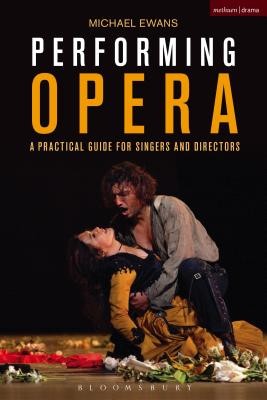
- We will send in 10–14 business days.
- Author: Michael Ewans
- Publisher: Methuen Drama
- ISBN-10: 1474239072
- ISBN-13: 9781474239073
- Format: 15.5 x 23.4 x 2.5 cm, minkšti viršeliai
- Language: English
- SAVE -10% with code: EXTRA
Reviews
Description
In Performing Opera: A Practical Guide for Singers and Directors Michael Ewans provides a detailed and practical workbook to performing many of the most commonly produced operas. Drawing on examples from twenty-four operas ranging in period from Gluck and Mozart to Britten and Tippett, it illustrates exactly how opera functions as dramatic form.
Grounded in close analyses of performances of thirty scenes and five whole operas by first-rate singers and celebrated directors, Performing Opera provides readers with an appreciation of the unique challenges and skills required by performers and directors. It will assist them in their own performance and equip them with detailed knowledge of works most commonly featured in the repertoire. In the first part of the book the analysis progresses from scenes in which the singers are silent, via arias and monologues, duets and confrontations, up to ensembles. Wider issues are subsequently addressed: encounters with offstage events, encounters with the numinous, characterization, and the sense of inevitability in tragic opera.EXTRA 10 % discount with code: EXTRA
The promotion ends in 21d.19:48:37
The discount code is valid when purchasing from 10 €. Discounts do not stack.
- Author: Michael Ewans
- Publisher: Methuen Drama
- ISBN-10: 1474239072
- ISBN-13: 9781474239073
- Format: 15.5 x 23.4 x 2.5 cm, minkšti viršeliai
- Language: English English
In Performing Opera: A Practical Guide for Singers and Directors Michael Ewans provides a detailed and practical workbook to performing many of the most commonly produced operas. Drawing on examples from twenty-four operas ranging in period from Gluck and Mozart to Britten and Tippett, it illustrates exactly how opera functions as dramatic form.
Grounded in close analyses of performances of thirty scenes and five whole operas by first-rate singers and celebrated directors, Performing Opera provides readers with an appreciation of the unique challenges and skills required by performers and directors. It will assist them in their own performance and equip them with detailed knowledge of works most commonly featured in the repertoire. In the first part of the book the analysis progresses from scenes in which the singers are silent, via arias and monologues, duets and confrontations, up to ensembles. Wider issues are subsequently addressed: encounters with offstage events, encounters with the numinous, characterization, and the sense of inevitability in tragic opera.

Reviews